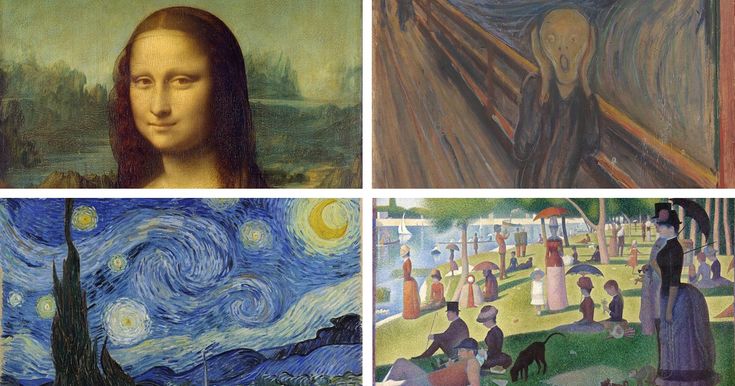Exploring Art Movements: A Guide to Understanding Different Styles

Art movements have played a pivotal role in shaping the rich tapestry of artistic expression throughout history. From the classical ideals of the Renaissance to the abstract innovations of the 20th century, each movement reflects the spirit of its time and the artistic visions of its creators. Understanding these diverse art movements not only enhances our appreciation of art but also offers a glimpse into the cultural, social, and philosophical underpinnings that inspired artists across the ages.
From Renaissance masterpieces to the abstract wonders of the 20th century, let's gain a deeper understanding of the different artistic styles that have captured the human spiri
THE RENAISSANCE: A Rebirth of Classical Ideals
The Renaissance, a cultural and artistic movement that emerged in Italy during the 14th to 17th centuries, is celebrated for its revival of classical learning and humanism. Artists like Leonardo da Vinci, Michelangelo, and Raphael created iconic works that emphasized realism, perspective, and emotional depth. The era witnessed a flourishing of new techniques, including chiaroscuro and sfumato, which added dimension and lifelike qualities to their paintings and sculptures.
BAROQUE: Dramatic Grandeur and Emotional Intensity
The Baroque period, following the Renaissance, exuded drama, grandeur, and emotional intensity in art. This movement, which dominated the 17th century, embraced a dynamic interplay of light and shadow, intricate detailing, and religious themes. Caravaggio's dramatic use of chiaroscuro and Gian Lorenzo Bernini's awe-inspiring sculptures are prime examples of Baroque's theatrical flair.
IMPRESSIONISM: Capturing the Fleeting Moments
In the late 19th century, Impressionism revolutionized the art world with its emphasis on capturing fleeting moments of light and atmosphere. Artists like Claude Monet, Edgar Degas, and Pierre-Auguste Renoir sought to convey the essence of a scene rather than its exact representation. Through quick brushstrokes and vibrant colors, they immortalized the effects of light on landscapes, cityscapes, and everyday life.
POST-IMPRESSIONISM
Post-Impressionism was an art movement that emerged in the late 19th century as a response to the limitations of Impressionism. It encompassed a diverse group of artists, including Vincent van Gogh, Paul Cézanne, and Georges Seurat, who sought to push the boundaries of artistic expression. Post-Impressionists emphasized bold use of color, abstract forms, and subjective perspectives, paving the way for the development of modern art.
CUBISM: Breaking Boundaries of Perception
Cubism, pioneered by Pablo Picasso and Georges Braque in the early 20th century, introduced a radical departure from traditional representation. This movement broke down subjects into geometric shapes and multiple viewpoints, challenging the viewer's perception and perspective. Cubist art, characterized by fragmented forms and abstract elements, laid the foundation for modern art's departure from realism.
SURREALISM: Unleashing the Power of the Subconscious
Surrealism emerged in the 1920s, focusing on tapping into the subconscious mind to create dreamlike and fantastical imagery. Led by artists like Salvador Dali and René Magritte, Surrealism explored the realm of the unconscious, symbolism, and the juxtaposition of unrelated objects. Through their works, Surrealist artists sought to challenge conventional thinking and reveal the hidden mysteries of the human psyche.
JOIN US in the studio for some painting and wine classes where you can make some masterpieces of your own! We offer painting for all of the seasons and holidays, as well as some that were inspired by (or our own versions of) famous artists like Van Gogh (and his post-impressionistic style) :)
See you soon!

